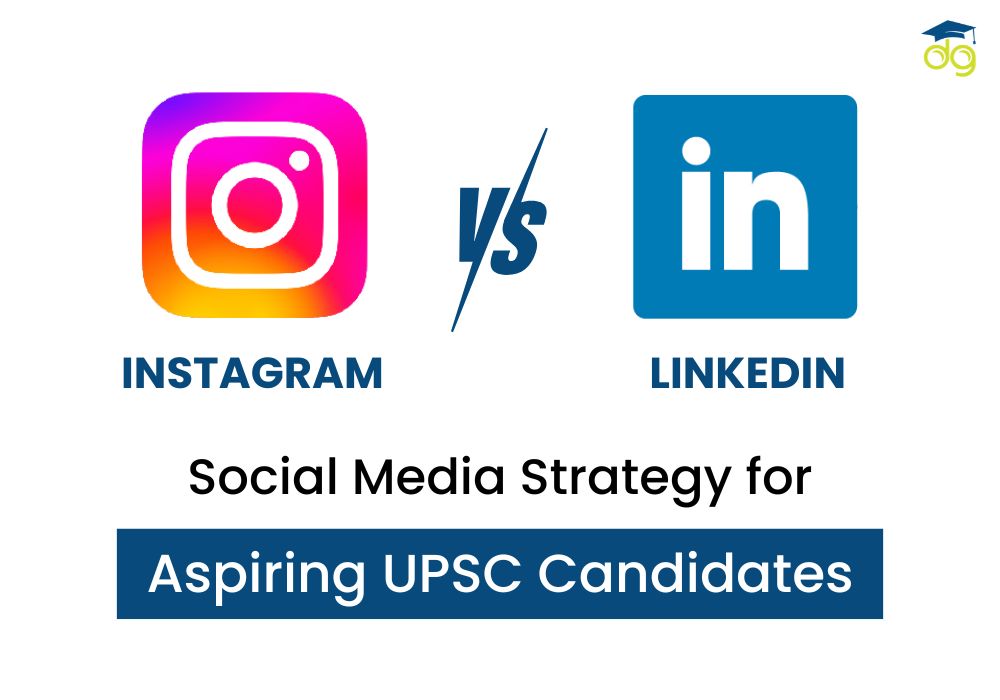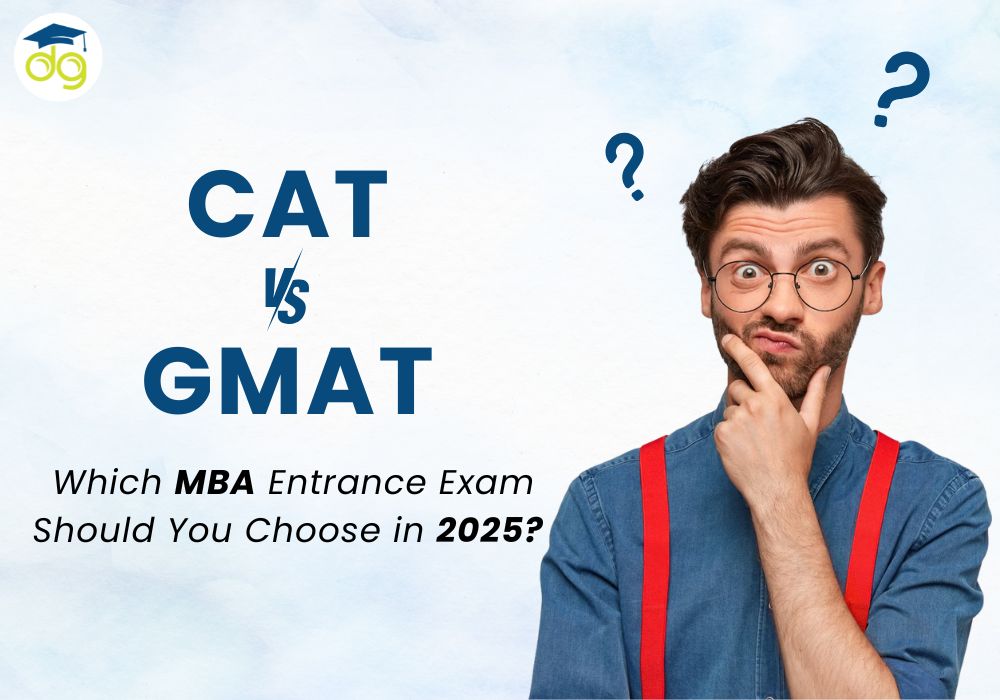CAT vs. GMAT: Which MBA Entrance Exam Should You Choose in 2025?
Compare CAT and GMAT to find the best MBA entrance exam for your goals.
Students who want career progress through an MBA must carefully choose their entrance examination since it shapes their admission prospects. The rising business competition makes selecting appropriate MBA entrance exams crucial for securing better admission possibilities as well as professional direction. The choices for MBA admission exams lead to the Common Admission Test (CAT) and Graduate Management Admission Test (GMAT), which stand out as prominent entrance examinations. Top business schools accept these two exams that possess major differences in structure together with difficulty scale and acceptability factors.
Your choice between taking the CAT or GMAT depends on the test structure along with their difficulty levels, associated costs and whether you aim for an Indian or international MBA program as well as your career objectives for the future. The knowledge of key differences will enable future candidates to select their path toward their future goals with better information. Evaluating the best exam for an MBA requires students to assess whether they want to study in India or abroad. The comprehensive blog offers an extensive examination between CAT and GMAT assessments so you can better choose which test best suits your needs based on personal abilities, career objectives, and individual preferences.
Understanding CAT and GMAT
What is CAT?
The Common Admission Test (CAT) serves as India's most preferred entrance exam for Master of Business Administration admission. All 12 IIMs carry out CAT exams which receive acceptance from more than 1,200 business education institutions across India. The CAT selection process builds an intense test because it evaluates candidates through tests of quantitative aptitude and verbal ability together with logical reasoning and data interpretation abilities.
CAT is a computer-based test (CBT) that is held once a year, typically in November. The exam is divided into three major sections:
Verbal Ability and Reading Comprehension (VARC) – The evaluation assesses candidates’ English language abilities combined with their understanding skills and grammatical proficiency.
Data Interpretation and Logical Reasoning (DILR) – The section tests logical thinking by asking candidates to solve problems with data sets and logical sequences as well as pattern recognition.
Quantitative Aptitude (QA) – Mathematical concepts form the basis of this section because it evaluates numerical abilities along with problem-solving capabilities.
Candidates obtain scores through the CAT percentile system that positions them relative to other participants in the examination. A strong percentile score is the primary admission requirement for all top Indian business schools including IIMs and FMS, SPJIMR, and MDI.
What is GMAT?
The Graduate Management Admission Test (GMAT) operates worldwide to gain approval from 7,000 business programs throughout 2,300 universities that span India along with other international education systems. The GMAC Graduate Management Admission Council runs this exam which business schools consider valid for admissions at various universities across the United States, Canada, Europe, and international locations.
The GMAT conducts questions through an adaptive system where question difficulty changes based on the test taker's performance in the previous questions. The GMAT stands out since it adjusts the test difficulty according to the candidate's ability level throughout the actual assessment.
The GMAT is divided into four sections:
Analytical Writing Assessment (AWA) – The candidates must evaluate an argument before delivering their organized response within this segment.
Integrated Reasoning (IR) – The evaluation of this section focuses on how well subjects interpret and analyze data from various sources including tables and graphs.
Quantitative Reasoning (Quant) – This segment evaluates candidates through problem-solving tests that verify numerical abilities and logical thinking abilities.
Verbal Reasoning (Verbal) – Critical reasoning together with reading comprehension and grammar-based sentence correction form the evaluation criteria in this section.
Most institutions within the top business schools accept GMAT scores higher than 650 but the exam rates from 200 to 800. Those who take GMAT gain five years of validity in their test results which gives them more freedom when planning their B-school admissions proces
Key Differences Between CAT and GMAT
| Feature | CAT | GMAT |
Exam Mode | Computer- Based | Computer-adaptive |
Exam Duration | 2 Hours | 2 Hours and 15 minutes |
Sections | VARC, DILR, QA | Quants, Verbal, IR, AWA |
Question Type | MCQs and TITA | MCQs |
Negative Marking | Yes | No |
Frequency | Once a year | Multiple times a year |
Score Validity | 1 year | 5 years |
Exam Fee | INR 2,400 | $275(~INR 23,000) |
Acceptance | Indian B-Schools | Global B-Schools |
Which Exam is Harder?
Difficulty Level of CAT
Students widely recognize CAT as being an extremely challenging exam, particularly within the sections of Quantitative Aptitude (QA) and Data Interpretation (DILR). A top score in the percentile-based exam does not ensure admission to any educational institution.
Difficulty Level of GMAT
Personalized testing occurs through GMAT's adaptive system which makes the exam more difficult to grasp conceptually. Quantitative questions on GMAT tend to be easier than CAT questions but candidates face difficulties in Verbal and Integrated Reasoning sections.
CAT presents greater obstacles in its quantitative and logical sections yet GMAT asks more from test-takers in verbal reasoning and adaptive questions. Select an exam based on your skill competence and the intended MBA programs to which you wish to apply.
Career Goals: Which Exam to Choose?
The choice between CAT and GMAT should be based on your long-term career goals and target business schools. Here’s how to decide:
If you want to pursue an MBA in India: The preferred testing option is CAT since it gains acceptance from Indian Institutes of Management and additional leading business institutions throughout the country. The CAT examination stands as your best selection for pursuing a career in India’s corporate sector or consulting firms or startups.
If you are considering an international MBA: GMAT is your best bet. Aspiring students who want to enroll at international business institutions such as Harvard, Stanford, INSEAD, Wharton, or London Business School must take the GMAT as an admission requirement. Through GMAT entrance you can access worldwide work opportunities and earn better compensation.
If flexibility matters to you: The GMAT allows test-takers to choose their exam dates together with valid scores that extend for five years. The validity period of GMAT scores spans five years which allows you to allocate your MBA application process across a longer period.
If cost is a deciding factor: Students who focus on Indian universities can opt for CAT because its affordable pricing makes it cheaper than GMAT.
If you are looking for career progression in a global environment: The GMAT exam obtains higher recognition worldwide which helps you obtain managerial positions at multinational corporations as well as investment banks and global consulting enterprises.
Ultimately, your choice should align with your career aspirations, target MBA programs, and personal strengths.
Choose CAT if:
You want to study in top Indian B-schools, including IIMs, FMS, SPJIMR, and MDI.
You have a strong grasp of quantitative aptitude and logical reasoning.
You prefer one-shot preparation rather than multiple attempts.
Choose GMAT if:
You aim for global business schools like Harvard, INSEAD, or London Business School.
You want flexibility in exam scheduling and score validity.
You are better at verbal reasoning and essay writing.
Cost and ROI Consideration
Cost alongside return on investment (ROI) is essential for deciding between the CAT and GMAT examinations.
Cost Comparison
Students choose CAT as their examination preference for MBA studies in India because it costs ₹2,400 ($30) in exam fees making it accessible for all.
The GMAT testing process requires a substantial financial investment of approximately $275 which converts into Indian currency as ₹23,000. Now and then candidates will need to spend additional funds on score reports as well as rescheduling fees and preparation materials and these expenses will elevate the overall financial burden.
Score Validity and Flexibility
Candidates who apply in the same cycle must utilize their valid CAT scores because their validity extends for just one year.
Candidates who delay their MBA application have the flexibility of using valid GMAT scores for up to five years. This long validity period allows individuals to gain work experience before applying to business schools.
Return on Investment (ROI)
The combination of CAT entrance and an MBA degree from an Indian business school proves to be a beneficial investment when students plan to stay in the country for their professional advancement. Due to lower educational fees students gain high return on investment while increasing their lifetime earnings by studying at top-ranking Indian business institutes and other respected schools.
A graduate degree from an internationally renowned business school through GMAT admission tests produces greater long-term financial returns for students who seek international positions in consulting, investment banking, technology, and management fields. Top global business schools including Harvard, Wharton, Stanford, INSEAD, and London Business School award their graduates lucrative job positions through which the GMAT test and international MBA fee become justified.
Conclusion: The Role of Skoodos Bridge
Your academic goals together with personal abilities along with financial resources determine your selection between the GMAT and CAT. To pursue admission in India’s top B-schools including IIMs FMS and MDI you should select CAT as your examination. International MBA applicants seeking admission to top business schools such as Harvard and INSEAD together with London Business School should pursue GMAT because the GMAT exam accepts candidates at a global level.
The exam preparation approaches are opposite because the CAT assesses candidates on quantitative reasoning and logical thinking whereas the GMAT tests applicants on analytical reasoning and verbal fluency. CAT test scores remain valid for one year yet GMAT scores have five years validity which gives prospective MBA candidates more time to decide their program entry point.
Aspiring students who need assistance choosing between these tests can receive professional guidance through Skoodos Bridge for selecting future career paths based on personal profiles. Students can achieve successful business school admission through Skoodos Bridge because it provides tailored advice about school selection along with examination preparation resources.
Contact Skoodos Bridge for the best advice about choosing between CAT and GMAT as they support your path to achievement. Make a smart decision today because it leads to an outstanding career path.
FAQs
1. Can I take both CAT and GMAT?
Yes, many students appear for both exams to keep their options open.
2. Is GMAT harder than CAT?
GMAT is adaptive and analytical, whereas CAT is quant-heavy and time-restricted. Difficulty depends on your strengths.
3. Can I use a GMAT score for IIM admissions?
Yes, some IIMs accept GMAT scores for executive MBA programs but not for regular MBA.
4. Which exam is better for scholarships?
GMAT scores are widely used for scholarship considerations in global business schools.
5. How early should I start preparing?
CAT: At least 6-12 months in advance.
GMAT: At least 3-6 months in advance.
Still unsure about which MBA entrance exam to choose? Get expert guidance from Skoodos Bridge and take your first step toward success today!
Categories
Archives
- October 202521
- September 202520
- August 202522
- July 202524
- June 202524
- May 202526
- April 202530
- March 202523
- February 202513
- January 202523
- December 202429
- November 20246
- September 20245
- August 202422
- July 202415
- May 20249
- June 202424
Similar Posts

Electric Vehicle Jobs: Top Mechanical Engineering Careers in EV Sector
by Skoodos Bridge

EdTech Careers After Engineering: Build Learning Apps & Startups
by Skoodos Bridge

Gaming Meets Medicine: VR Therapy Careers for NEET Aspirants
by Skoodos Bridge

WhatsApp Group Study: Boost Your Competitive Exam Preparation
by Skoodos Bridge

Drone Engineering Careers: Aerospace Pathways, Exams & Job Opportunities
by Skoodos Bridge

Instagram vs LinkedIn: Smart Social Media Strategy for UPSC Aspirants
by Skoodos Bridge

YouTube Shorts for Revision: Micro-Learning to Memorize Formulas Quickly
by Skoodos Bridge

ChatGPT for JEE Physics: Smart Prompts to Master Problem Solving
by Skoodos Bridge

Space Technology Careers: ISRO Opportunities Beyond Aerospace Engineering
by Skoodos Bridge


Leave a Comment